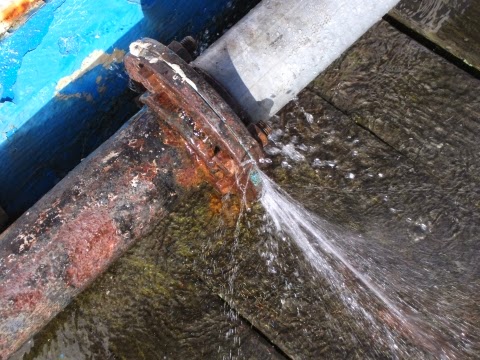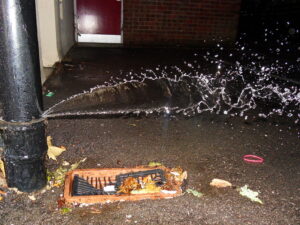They are making several good pointers about Quick Tips To Help Deal With Water Damage as a whole in this content following next.

What should you do if a pipes bursts in your home? Do you desire a mini-waterfall as well as flooding in an area of your residence? If you find yourself in this situation, you have to act quick. The longer you wait, the a lot more severe the damages that can take place to your home. The clearheadedness is key in these events. For these factors, you require to learn exactly how to act in case of a burst pipes. Check out the complying with ideas listed below to aid you act fast due to the fact that time is important.
Shut down the Key Waterline Valve
The first thing to do? Shut the shut-off valve. Look for the neighborhood shut-off valve to turn off the water in one details location only. Go for the primary water line shutoff and turn it off if you don't understand where the localized shut-off shutoff is. This action will cut off the water immediately in your entire residence. Generally, the primary valve is found outside the residence beside the water meter. If it's not there, you can likewise discover it in two places: in the basement at eye degree or the 1st floor on the ground. Normally, home builders put the shut-off valve generally ground level shower room or appropriate alongside it.
Call Water Damages Remediation Pros for Aid
After shutting the water source, call the professionals for help. With their professional help, you can prevent much bigger water damages including distorted baseboards, loosened ceramic tiles, or damaged frameworks.
File the Damages For Insurance
While you're waiting for the pros to get here, get some paperwork of the damage caused by the wayward pipe. Do close-up shots of the harmed prized possessions and spots.
Restore Points That Can Be Saved
When you're done taking images, take a look at the damaged products as well as obtain one of the most important ones from the pile. Dry them off in a dry/warm area away from the damaged area and also try to preserve them as long as you can. Drag as much dampness as you can to the material so it can begin to dry.
Beginning the Drying Process
Luckily, the water from your waterlines is already tidy so you don't have to fret about drain water. The moving water may have disrupted the dust and also debris in your rugs as well as floorboards. Blot out as much water as you can from the surfaces with old towels.
Experts are the only people qualified to examine appropriately and also deal with the burs pipes and subsequent damages. As constantly, pipes don't just instantly break out of the blue. They typically provide silent red flags like gurgling paint, water spots. Strange noises in the plumbing, caving ceiling, musty smell, or peeling wallpaper. Keep in mind of these indicators as well as do some preventive measures so you can nip any kind of problems in the bud.
What should you do if a water pipeline bursts in your residence? For these factors, you need to find out exactly how to act in the occasion of a burst water pipe. After closing the water source, call the experts for aid. With their expert assistance, you can protect against much larger water damages consisting of deformed baseboards, loose ceramic tiles, or harmed frameworks. Thankfully, the water from your waterlines is already clean so you do not have to worry about drain water.
How to Handle a Burst Pipe and Minimize Damage
Steps to Take Ahead of Time
If you own property in an area that experiences cold weather, you need to be aware of seasonal maintenance tasks that will help you protect your property as the weather changes each year. One of the most important steps is to winterize your pipes to ensure they won't freeze or burst when the temperature drops. This includes action items like insulating any exposed pipes, detaching garden hoses and covering outdoor faucets. If the weather gets cold enough, you may even consider leaving a faucet dripping or opening cabinet doors during the coldest parts of the day.
No matter how prepared you might be, accidents and emergencies still happen. You'd be wise to set up a savings account specifically for your property so you have a "rainy day" fund set aside for unexpected expenses. All homes regardless of age, location or condition will inevitably need some form of emergency repair.
Steps to Take for Frozen Pipes
A frozen pipe will not necessarily burst, so if you can catch a frozen pipe early on, you could save yourself a major headache. When your area experiences frigid temperatures, be sure to check your plumbing and keep an eye out for warning signs like faucets only releasing small amounts of water or toilets not refilling when flushed. If you do run into one of these issues, you're likely dealing with a frozen pipe.
If this happens, your first step should be to cut off the water supply to that section of the plumbing. Expanding and freezing water can quickly cause damage. Even if the water supply is shut off, you will likely still deal with some leaking from the water that defrosts after the pipe has thawed. Be prepared with a mop, bucket and/or towels to quickly soak up any excess water.
In order to thaw a frozen pipe, you can use a space heater, infrared or incandescent heat lamp, or even a hairdryer to warm up the frozen area. Heat tape is also an option and should be used according to manufacturer instructions. Do not use any sort of open flame to thaw frozen pipes, as it poses a major fire hazard and can damage your pipes further.
Steps to Take for a Burst Pipe
Water damage claims are the second most common insurance claim in the U.S. When you're dealing with a frozen pipe, the water continues to expand as it freezes, which creates pressure that can cause a pipe to burst. When this happens, the crack or leak in the pipe allows water flow from the pipe to enter your home where it shouldn't. If a pipe does burst, you need to act quickly to mitigate property damage and repair cost.
Your very first step should be to shut off your main water supply to minimize flooding typically the most expensive damage to address. Once you've shut off the water supply, make sure you identify the entire area that has been impacted by the leak. Remove as much water as possible as quickly as possible using a mop, sponges, towels or a shop vacuum or wet/dry vacuum. To prevent long-term damage due to moisture build-up, run a dehumidifier or fan in the affected area. Contact a licensed plumber to ensure the pipe is correctly repaired before running any water to that section of the home again. Burst pipes and the associated water damage are something you absolutely want to avoid as a property owner. If you've had to learn your lesson the hard way, don't let yourself get caught in a similar situation during the next spell of cold weather. The best way to deal with frozen or burst pipes is to prevent them in the first place proactive winter maintenance will save you time, money and a whole lot of stress.

We hope you enjoyed our article on The Do s And Don ts When Water Floods Your Home. Thanks so much for spending some time to read through our piece. Remember to set aside a second to promote this blog entry if you enjoyed reading it. We cherish reading our article about Water Damage Restoration Do s And Don t.
Act fast, Call us!